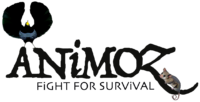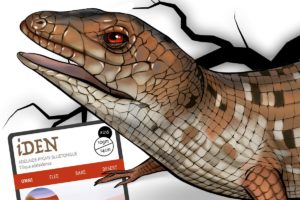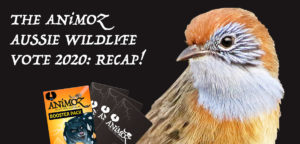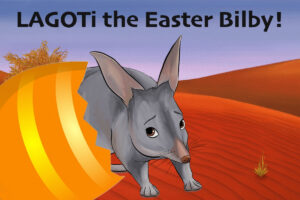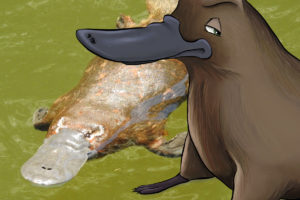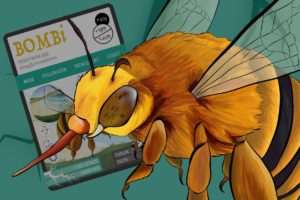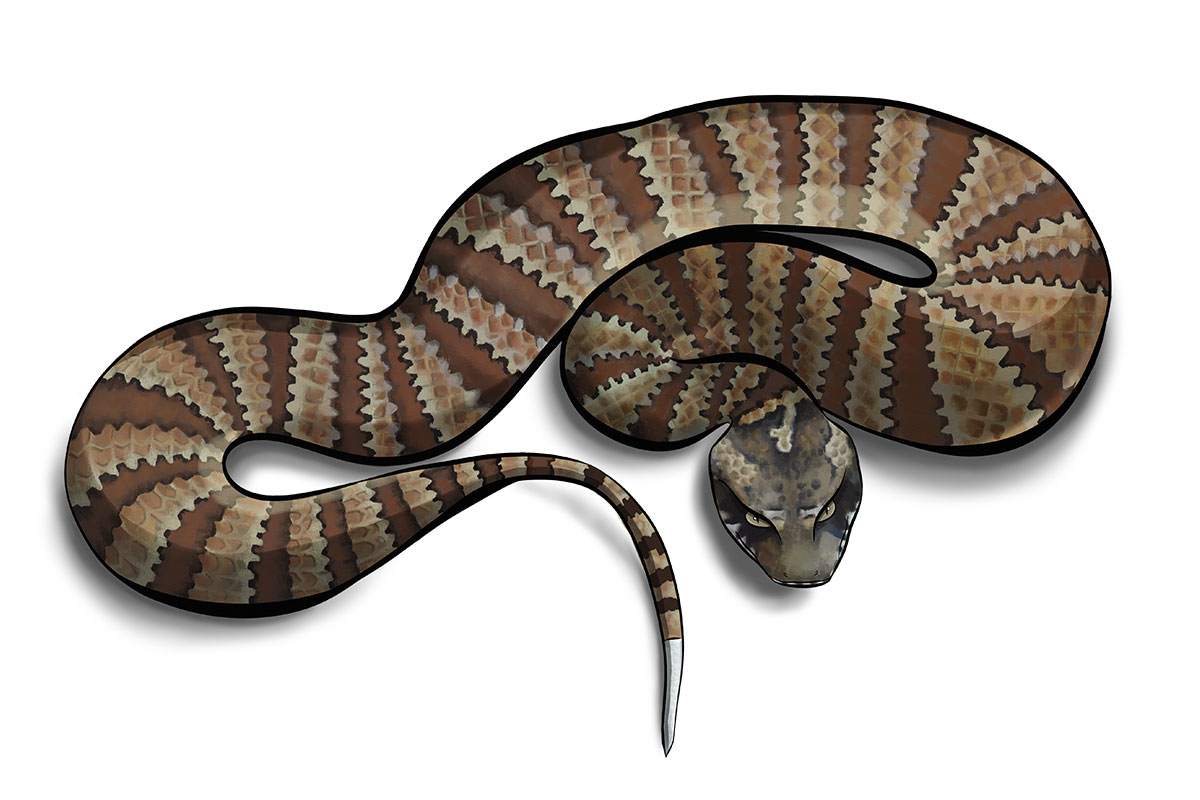
ANTAR - Common Death Adder
“There is little noise aside from the crashing waves near this coastal woodland, and all is still apart from the flutter of birds. Having not moved from under this pile of leaves in over a day, ANTAR is showing extreme patience as she awaits the perfect moment to strike. With just the tip of her tail sticking out, her Leaf N Lure Power is working its magic. Wing species, seeing this tasty snack wiggling about on the forest floor, are coming closer and closer. Finally, one can no longer resist. EXiMi swoops in to grab lunch, but the leaves explode and ANTAR’s big, arrow-like head opens and grabs hold of her prey. Her Muscle Lock Power kicks in, and she begins her feast...”
ANiMOZ #110
Code: ANTAR
Common name: Common Death Adder
Taxonomy: Acanthophis antarcticus
Level: CARN | Form: VENOM | Status: COMMON
BiOME: COAST + Scrub
Overcomes: Drought
Superpowers:
MUSCLE LOCK
ANTAR’s deadly venom works predominantly as a neurotoxin, meaning her victim gradually loses control of their muscles! Her Muscle Lock Superpower isn’t always engaged, often biting threats with a ‘dry bite’ without releasing any venom. This is because it takes a lot of energy for ANTAR to produce the toxin. However, when needed, she will lock down her prey’s muscles, eventually leading to their death!
LEAF N LURE
Being a cryptic species, ANTAR uses his Leaf N Lure power to hide amongst leaves and draw his prey toward him, unsuspecting. His tail tip is shaped like a worm, so whilst lying under the cover of fallen leaves, ANTAR slowly writhes his tail back and forth. This movement attracts hungry animals who aren’t prepared for a sudden explosion of leaves and the surprising attack!
Weaknesses:
WING
Whilst ANTAR sometimes feeds on smaller birds, she automatically loses a Clash with a Wing species due to her vulnerability to aerial attack. NOVA is a constant threat, as are many other larger birds. They don’t always see ANTAR as a food item though - they may just be protecting their nest, mistakenly thinking ANTAR would predate their eggs!
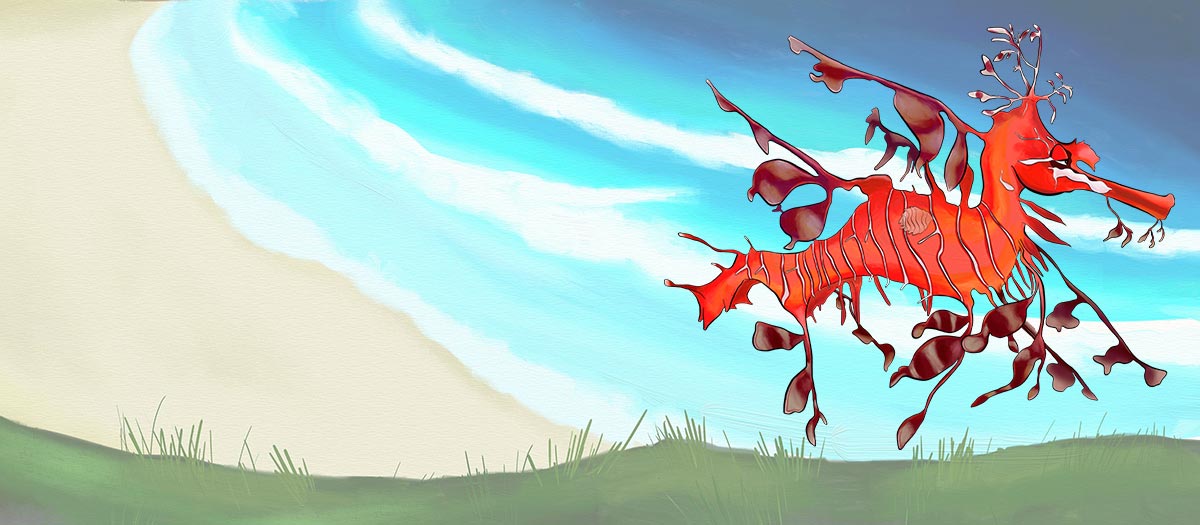

How ANiMOZ Helped Australian Wildlife in 2020
2020 was the first full year of ANiMOZ being out in the Ranger community! Whilst it was a challenging 12 months both for Rangers and endangered species, we’re proud to say we helped make an impact. We supported three organisations working to save some of your favourite ANiMOZ creatures out in the wild: Foundation for …
Species Report: EQUES the Leafy seadragon
EQUES is the Leafy seadragon (Phycodurus eques) – master of camouflage! Species report on the Leafy seadragon EQUES is a master of camouflage with a body covered in leaf-like protrusions and the ability to change colour! They grow 20-24 centimetres long, but it is unknown how long they live for. Leafies are the marine …
Species Report: iDEN the Adelaide pygmy bluetongue
The Adelaide pygmy bluetongue lizard is one of the winning species from the Aussie Wildlife Vote 2020, nominated by Zoos SA! Here’s all you need to know about iDEN (Tiliqua adelaidensis)! They do not have a blue tongue! They get their name because they are a small skink in the same genus as other bluetongue …
Species Report: iDEN the Adelaide pygmy bluetongue Read More »
From the Field: Ranger Frank talks about ACU!
From the Field: Headquarters speaks to real-life Rangers working to save ANiMOZ species like ACU the Short-beaked echidna! In our From the Field series, we talk to scientists working across Australia to save the Rare and Highly Rare animals you know from the World of ANiMOZ. Today, we hear from Ranger Frank who works with …
The ANiMOZ Aussie Wildlife Vote 2020 – Recap
The inaugural ANiMOZ Aussie Wildlife Vote has ended, with the Pygmy bluetongue being voted in to the Booster Packs in top position. After 31 days, 4000 votes, 30 species and tight competition, the 3 animals to make the first official ANiMOZ Booster Packs have been decided by you, Rangers from across Australia: the Pygmy bluetongue …
Learn about LAGOTi the Easter Bilby
The Greater bilby (Macrotis lagotis) is LAGOTi – a Highly Rare animal from the Desert! There were once two species of bilby – Greater and Lesser – but the Lesser bilby became extinct due to predation from Invasive Species (feral cats and foxes). Bilbies are believed to have inhabited Australia for up to 15 million …
Ranger Community: “The game has been a huge feature in our household”
In our Ranger Community series, we hear from ANiMOZ Rangers out in the field about how they use the game to learn about, teach about and support wildlife. The Rangers from EnviroEdu write to Headquarters about how they use ANiMOZ! The ANiMOZ – Fight for Survival card game has been a huge feature in …
Ranger Community: “The game has been a huge feature in our household” Read More »
From the Field: Ranger Tam talks about ANATi!
From the Field: Headquarters speaks to real-life Rangers working to save ANiMOZ species like ANATi the Platypus! In our From the Field series, we talk to scientists working across Australia to save the Rare and Highly Rare animals you know from the World of ANiMOZ. Today, we hear from Ranger Tam who works with ANATi! …
Species Report: ViRiD the Green tree python
The Green tree python (Morelia viridis) is ViRiD – a Carn Predator from the Forest! Adult Green tree pythons are 150-180 centimetres long, but can grow up to 200 centimetres They can live for up to 20 years Juveniles are a different colour from the adults. Found in Indonesia, Papua New Guinea, and northern …
Species Report: BOMBi the Teddy bear bee
The Teddy bear bee (Amegilla bombiformis) is BOMBi – a Pollinator species from the Coast BiOME Also known as the Golden-haired mortar bee – a solitary bee endemic to Australian coastal habitats. BOMBi is a large bee, growing up to 15mm long. A Pollinator species, the Teddy bear bee helps many of our native plants …
